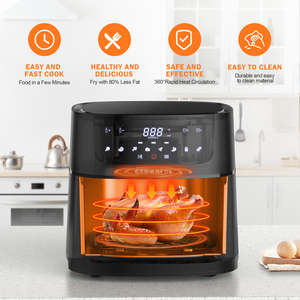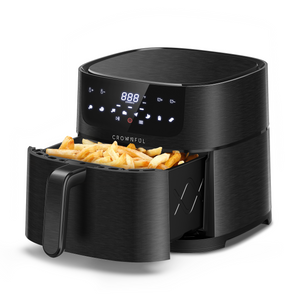Dehydrating food is an excellent way to preserve its nutrients and extend shelf life. However, determining when your food is fully dehydrated is crucial to ensure safety and quality. This guide provides practical tips and signs to help you assess the dryness of your food effectively.
1. Understanding the Dehydration Process

Dehydration involves removing moisture from food to inhibit the growth of microorganisms and enzymes that cause spoilage. This process is typically achieved using a food dehydrator, which circulates warm air around the food to facilitate moisture evaporation.
Source: How to Use a Food Dehydrator
2. Signs Your Food Is Fully Dehydrated

-
Texture Check: Properly dehydrated food should be brittle or leathery, depending on the type. For instance, fruits like apples should snap when bent, while vegetables should be crisp.
-
No Moisture: There should be no visible moisture on the food's surface. If you notice any, it indicates that the drying process is incomplete.
-
Cooling Test: After turning off the dehydrator, let the food cool to room temperature. If condensation forms inside the storage container, the food is not sufficiently dried.
-
Weight Consistency: Weighing the food before and after dehydration can help determine if it has reached the desired dryness. A significant reduction in weight indicates successful dehydration.
3. Tips for Optimal Dehydration

-
Uniform Slicing: Cut food into uniform pieces to ensure even drying.
-
Avoid Overloading: Do not overcrowd the dehydrator trays; adequate airflow is essential for effective drying.
-
Proper Storage: Store dehydrated food in airtight containers in a cool, dark place to maintain its quality and prevent moisture absorption.
Source: How to Dehydrate Fruit So That You Can Win at Life
Conclusion

For those seeking a reliable and efficient food dehydrator, the Crownful Food Dehydrator stands out. Equipped with multiple stainless steel trays, it ensures even heat distribution and durability. Its user-friendly controls allow for precise temperature and time settings, making the dehydration process more manageable.
Determining when your food is fully dehydrated involves assessing its texture, checking for moisture, conducting cooling tests, and monitoring weight changes. By following these guidelines, you can ensure that your dehydrated foods are safe, nutritious, and of high quality. Utilizing a reliable dehydrator like the Crownful Food Dehydrator can further enhance your food preservation efforts.



